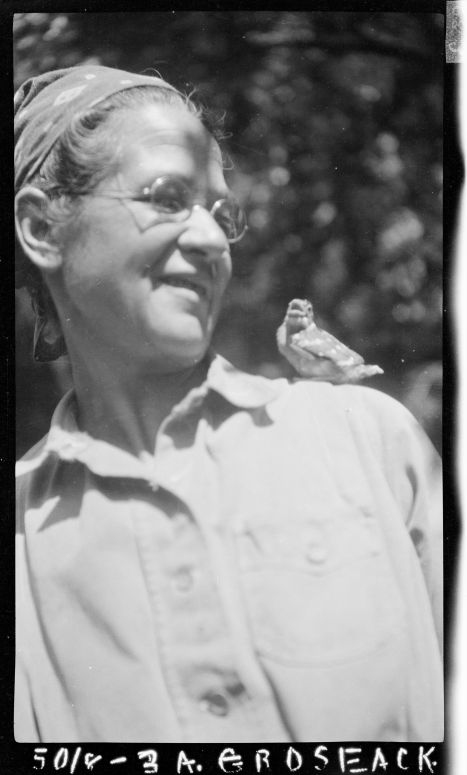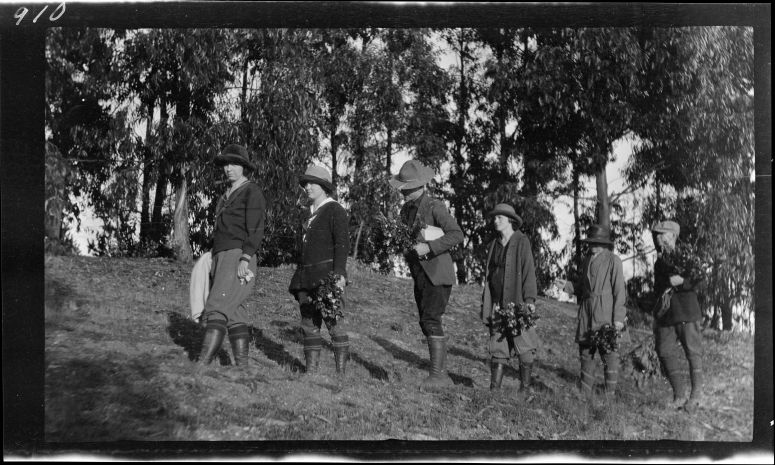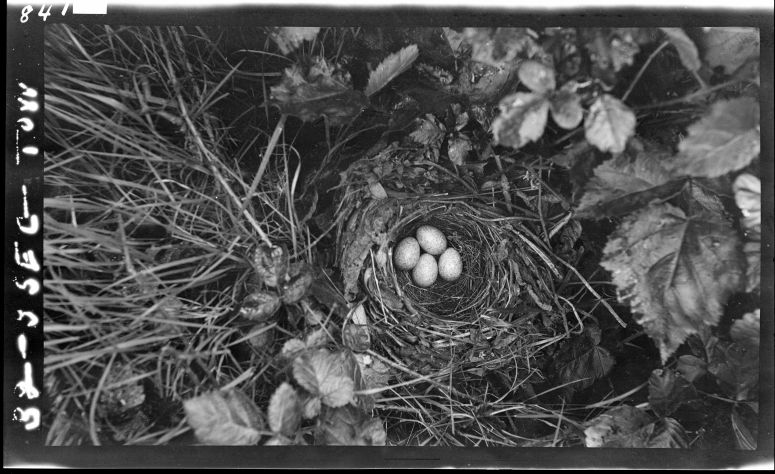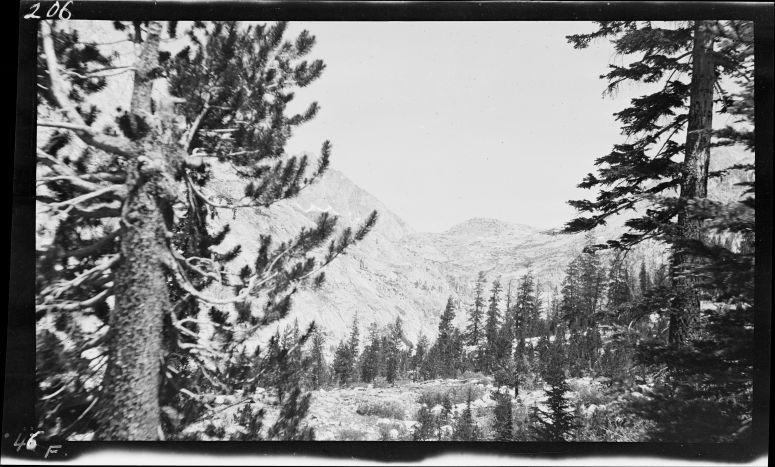The archives at the California Academy of Sciences hold the life’s work of many amazing scientists and naturalists. While recently undertaking a survey of our photograph collection, I had the chance to revisit the work of a true pioneer, Ynes Mexia. Ms. Mexia was a fiercely independent botanist who traveled through the taxing wilderness of South America, Mexico, and Alaska in search of plant specimens from the mid-1920s through the late 1930s. Mexia was often only accompanied by hired guides and carried what she could in order to sustain her and more importantly, to support her work gathering specimens. Like many of the plants she was so fond of, Ynes Mexia was a bit of a late bloomer.

Ynes Mexia © California Academy of Sciences.
"Young Black-headed Grosbeak."
Portrait of Ynes Mexia, ca. 1921.

Ynes Mexia © California Academy of Sciences.
"Bringing home the specimens."
Contra Costa County (Calif.), 1923.

Ynes Mexia © California Academy of Sciences.
"Nest and eggs of Spurred Towhee." ca.1923.
In 1925, Mexia was invited to join an expedition bound for Sinaloa, Mexico. In the early days of the expedition Mexia decided that she would be better suited to traveling alone. Mexia broke off from the expedition, gathered provisions, and sent for supplies to make her way to Mazatlan and down the Mexican coast. On this collecting trip Mexia gathered 3,500 specimens. This would mark the first of thirteen years of collecting expeditions in new and unexplored landscapes.
Mexia’s solo expeditions would take her back to Mexico, across South America, and even into Alaska, where Mexia would be the first to collect the flora of what is now the Denali National Park. The California Academy of Sciences holds many of Ynez Mexia’s photographs from her numerous travels both domestically and abroad. Much of her collection is comprised of negatives shot on a cellulose nitrate film base, which was a plastic that was commonly used as a flexible film base from 1889 to around 1951. The nitrocellulose in the chemical composition gradually decomposes, making it vulnerable to specific types of deterioration over time.
Here at the California Academy of Sciences, we are taking measures to help slow down the inevitable deterioration process of Mexia’s collection of beautiful photographs so that future generations can benefit from her experiences. We are currently in the process of digitizing Mexia’s nitrate negatives in order to retain access to the images while the artifacts are stored at a very low temperature. The negatives will be kept in a -20 degree stable environment to try and slow the deterioration process down to an imperceptible crawl. Ynes Mexia’s work embodies a pioneering spirit that we hope will continue to inspire curiosity and excitement in naturalists of all ages for generations to come.

Ynes Mexia © California Academy of Sciences.
Probably Middle Fork Canyon area, Kings Canyon National Park (Calif.) ca. 1919-1938

Ynes Mexia © California Academy of Sciences.
"Sentinal Dome - Glacier point - Jeffry Pine. Nature class with Dr. Bryant. July 2/21."
Resources:
-Anema, Durlynn. Ynes Mexia, Botanist and Adventurer. Greensboro, N.C: Morgan Reynolds Pub, 2005. Print.
-Mexía, Ynés. Ynes Mexia Papers. , 1910. Archival material.
-Polk, Milbry, and Mary Tiegreen. Women of Discovery: A Celebration of Intrepid Women Who Explored the World. New York: C. Potter, 2001. Print.